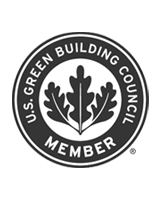LEED Certificatiom

With the construction of any type of building, it’s always important to ensure that it meets specific standards and codes in order to be deemed fit for use. This is especially true when looking to build a structure that fall under certain codes of environmental and energy consciousness.
In the same way that appliances can be Energy Star certified to ensure it meets all the specifications of an energy efficient model (and homes actually have to meet this standard as well), steel buildings almost always fall under LEED certification to denote those same properties. But what exactly does that mean? LEED, or Leadership in Energy and Environmental Design, is a popular design certification that’s used all over the world and aims to help home builders and homeowners be more environmentally conscious and use their resources in a more efficient way. In Canada, The Canada Green Building Council makes the final decisions and sets specific standards about how the process is completed.
It involves a point and rating system that takes multiple factors about a building, location, materials and more to determine whether or not they get the certification, with differences in checkpoints for different types of building depending on their use, be it residential, recreational or commercial spaces. These different rating systems are Homes, neighbourhood development, building operations and maintenance, interior design and construction and building design and construction, and each system has their own specific set of guidelines and consideration that cater to the type of building or development is being assessed. The buildings would then fall under a specific level based on points received during the assessment process. 40–49 points would receive “Certified”, 50-59 points would be rated “Silver” 60-79 points would receive a “Gold” rating, and 80 points & above would be rated “Platinum”.
Steel buildings and other pre-fab structures by nature are more environmentally friendly and energy efficient than traditional building, and tend to qualify for LEED certification. One thing that greatly helps prefab buildings in this regard is that LEED certification not only focuses on the final product, but the whole lifespan of the home, such as the building process and its effects on the environment. One of the many factors for consideration include the conservation of building materials and waste, meaning having less wasted material from any part of the process will make it more likely that a structure will receive the certification. Due to the very purpose of prefab, there’s little to no waste because all parts of the structure are made to order and fit perfectly with each other; with no need for cutting, leftovers or unused parts.
Location is one of the things that plays an important part of the decision process, as buildings closer to other homes, groups of buildings or within close proximity to sewer lines and water as the structure is able to benefit from that existing infrastructure instead of creating brand new connections that would further disturb the surrounding environment.
It’s important to note that Olympia Steel Buildings can qualify under LEED Green Building guidelines, so you can rest assured that you will meet this important standard. Contact us at 1-888-449-7756 for more information
